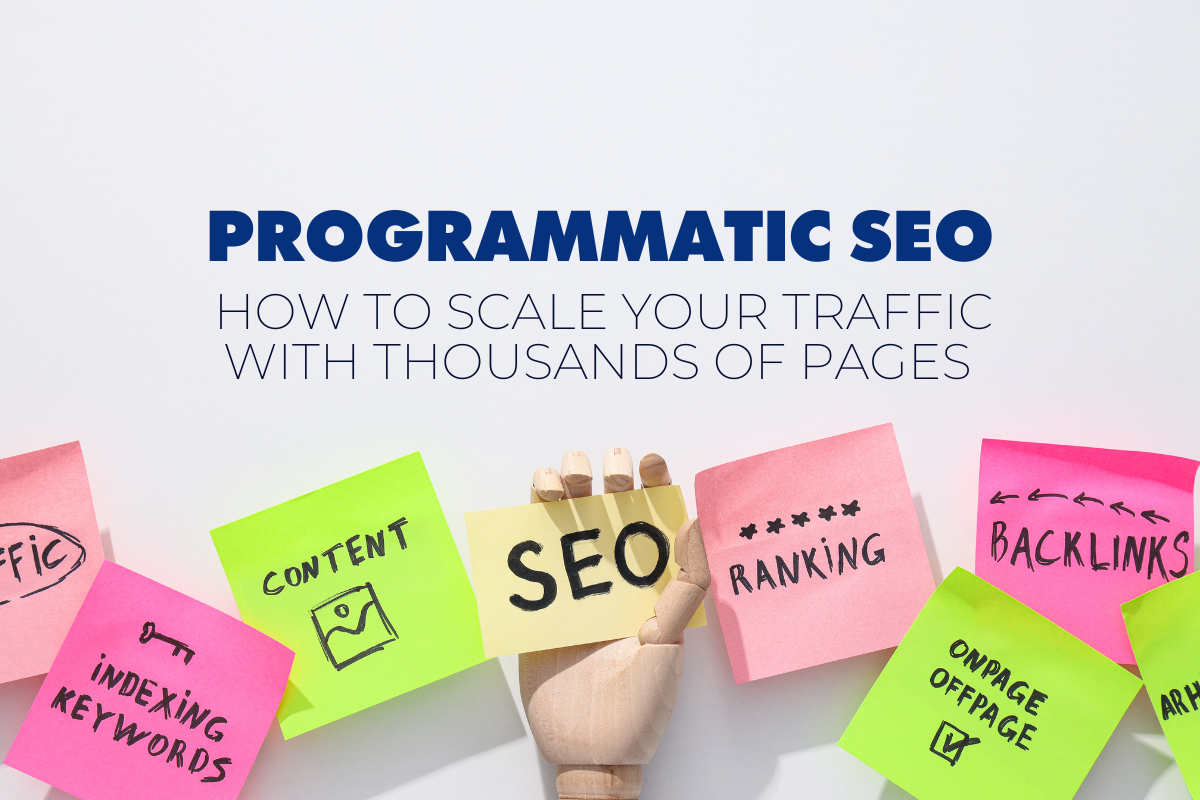In a digital world flooded with content, ranking for high-intent, long-tail keywords across thousands of topics may seem impossible without a massive editorial team. But there’s a smarter, scalable solution: Programmatic SEO.
Programmatic SEO is a technique that leverages automation and data to create and optimize hundreds or even thousands of SEO-focused pages. It’s how platforms like Zapier, G2, and TripAdvisor drive millions of organic sessions—without creating every page manually.
For businesses looking to grow rapidly, search engine optimization services have evolved. It’s no longer just about building backlinks or optimizing a few landing pages. With programmatic SEO, the focus shifts to scaling SEO like a product—with structure, automation, and precision.
What is Programmatic SEO?
Programmatic SEO is the process of generating large numbers of web pages—often in the hundreds or thousands—using data, templates, and automation. Each page is optimized for specific keyword variations, often long-tail or location-based terms, designed to rank for highly specific user queries.
Let’s say you run a property listing site. Instead of manually creating a page for “2BHK flats in Pune,” “3BHK in Mumbai,” and “studio apartments in Delhi,” you can build a template and populate it dynamically with city, price, and layout data from your database—scaling SEO content with speed and consistency.
This method is especially useful for businesses operating in e-commerce, SaaS, marketplaces, or travel, where the core offering can be broken into thousands of searchable variations.
Why Programmatic SEO Matters Today
With Google’s algorithms increasingly favoring relevance, structured data, and user intent, scaling SEO smartly is now more important than ever. Gone are the days when five blog posts a month were enough to dominate search. Today, success comes from coverage and quality at scale.
Here’s why programmatic SEO is a must-have in 2025:
- Captures long-tail traffic that’s often ignored by competitors
- Improves visibility across location-specific and niche terms
- Saves time and content creation costs
- Drives consistent traffic growth using automation
- Enhances topical authority in the eyes of search engines
For companies working with a professional SEO services provider or an SEO services company, programmatic SEO offers a high-ROI(Return on Investment) path to scale without bloated teams or excessive content spending.
How It Works: Core Components of Programmatic SEO
To implement programmatic SEO effectively, a business needs four foundational elements:
1. Keyword Dataset
It starts with keyword research at scale. Tools like Ahrefs, SEMrush, or even Google Search Console can help extract variations and modifiers that users are already searching. This includes:
- Product variations
- Location combinations
- Service modifiers
- Comparison keywords
This large dataset becomes the blueprint for your programmatic pages.
2. Structured Templates
Next, a template system is built—usually within a CMS or custom backend—that dynamically fills content using variables.
For example:
- “Buy [Product] in [City] at Best Price”
- “Compare [Brand A] vs [Brand B] for [Feature]”
These templates are SEO-optimized with headers, meta tags, and schema markup to ensure on-page SEO best practices are followed.
3. Dynamic Content Integration
Real-time or regularly updated data is pulled in to populate these templates. This can include pricing, specs, availability, reviews, or other user-focused data.
As a technical SEO strategy, this dynamic layering not only improves rankings but also enhances user experience by keeping content relevant.
4. Internal Linking & Crawl Optimization
With thousands of new pages being created, smart internal linking is key. This includes:
- Category and sub-category hubs
- Pagination handling
- XML sitemaps
- Noindexing low-quality duplicates
Partnering with an experienced SEO company in India or a top SEO company in India helps ensure your site architecture is crawl-efficient and Google-friendly.
Common Use Cases Across Industries
- E-commerce: Category and filter-based landing pages
- Travel: Location + activity-based pages (e.g., “Best beaches in Goa”)
- Marketplaces: Supplier/service provider listings
- SaaS: Integration pages, feature comparisons
- Local Businesses: Location-service combinations (“Plumber in Indore,” etc.)
Leading brands work with SEO outsourcing companies in India or expert SEO partners to build infrastructure that supports programmatic content while maintaining search compliance.
The Role of a Scalable SEO Company
Executing programmatic SEO requires a blend of development, SEO expertise, and scalable architecture. A future-ready SEO company will not just optimize what already exists—but help design a system that creates and scales content as a product.
From implementing structured markup and technical checks to maintaining keyword mapping and monitoring page performance, the best SEO agency goes beyond manual content writing.
Brands aiming to grow should look for a SEO company in Bangalore, Delhi, or elsewhere in India that understands the full-stack SEO lifecycle—from discovery to scale.
Avoiding Pitfalls: What Programmatic SEO Is Not
- It’s not duplicate content spam
- It’s not thin or AI-only generated pages
- It’s not a shortcut—it’s a structured, scalable SEO discipline
To be successful, programmatic SEO must still focus on user value, clean architecture, and clear search intent alignment. That’s where guidance from a professional SEO services team is critical
Conclusion
In a world where speed, automation, and precision define growth, programmatic SEO empowers brands to dominate organic search—without being limited by time or resources. It’s not just about writing content—it’s about building an SEO engine.
For companies looking to unlock serious growth potential, choosing the right search engine optimization services provider is essential. Whether you’re a marketplace, SaaS platform, or multi-location service business, a programmatic approach allows you to scale without compromise.
Ready to scale your SEO strategy with automation, structure, and performance at its core? It’s time to move from manual to programmatic—and from predictable to exponential.


